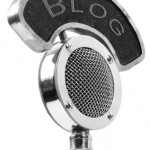 This week my guest is James Altwies, the President of Gorst Valley Hops. James is an expert in hop chemistry and this week we’re going to discuss what alpha acids, beta acids and hop aroma oils are and how they can help you make better beer.
This week my guest is James Altwies, the President of Gorst Valley Hops. James is an expert in hop chemistry and this week we’re going to discuss what alpha acids, beta acids and hop aroma oils are and how they can help you make better beer.
Download the MP3 File – Right Click and “Save As” to download this mp3 file
[audio:http://traffic.libsyn.com/beersmith/BSHB-38-Hop-Chemistry.mp3]Topics in This Week’s Episode (43:34)
- James Altwies, the President and CEO of Gorst Valley Hops is my guest this week. James is working to reintroduce through small farmers in Wisconsin. He is also an expert in hop growing and hop chemistry.
- Our topic for this week is Hop Chemistry and how hop chemistry affects home brewers.
- We start by discussing his project promoting the reintroduction of commercial hops into Wisconsin. James has been working with hop growers to produce very high quality hops without destroying fragile hop aroma oils.
- We start with the basic hop growing process and how hops are dried, pelletized and stored for our use.
- James explains where hop bitterness comes from – and what the alpha acids are.
- We discuss the various hop alpha acids (humulone, cohumulone, etc…) and how these are isomorized during the boil.
- James talks a bit about what the various humulone’s contribute to the beer.
- We talk about what IBUs measure and also some of the limitations of IBU measurement – which really only measures one aspect of hops flavor
- James explains what beta acids are and what they do for the beer
- We talk about hop storage and how rapidly hops can degrade if not stored properly
- He discusses in depth what the various aroma oils are and how they boil off at different temperatures. Often the oil flavor you are looking for drives what temperature and when you need to add your aroma hops.
- James explains how different uses of hops come together to create a complex hoppy beer like an IPA.
- He talks through the importance of understanding the chemistry of hops and how it drives beer brewing
Thanks to James Altwies from Gorst Valley Hops for appearing on the show and also to you for listening!
Thoughts on the Podcast?
Leave me a comment below or visit our discussion forum to leave a comment in the podcast section there.
Subscribe to the Podcast
Great News! We’ve been featured in the New and Notable podcasts on iTunes.
If you are not using iTunes, you can subscribe using this feed:
- http://feeds.feedburner.com/BeersmithcomHomeBrewingBlog
And finally, don’t forget to subscribe to the blog and my newsletter (use the links in the sidebar) – to get free weekly articles on home brewing.
I just listened to the Hops episode. Very interesting. Altwies was full of great hop info. I think I will try cooling my wort down with an immersion chiller first, then throwing in the flameout hops at 120, followed by a rest and then cool with the plate chiller. I am surprised how low the hop aroma is in my beers compared to the quantity of hops I use, quite a bit at flameout, but it may be that it’s too hot and I am wasting them. Thanks for another great show and for the podcast in general. I listen all the time.
Ahh, Just read Chris Mcnallys comments above, and ditto, that saves some typing. I really enjoyed this episode and have also been looking to improve hop flavour and aroma through lowering the post boil temps. There was a lot of info squeezed into that short segment on co humulones, I’d love to know more. James talked about comparing humulone levels in hop varaeties, where can this info be found, and could a simplified version be built into the beersmith hop inventory. Great show Brad, more like this please.
Great show with a lot of new, unique information. I’ll be brewing my IPAs and Bitters differently in future.
Pingback: How to get the best hop aroma from flameout additions? - Page 20 - Home Brew Forums